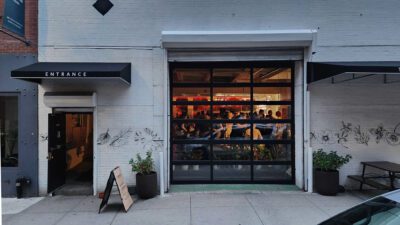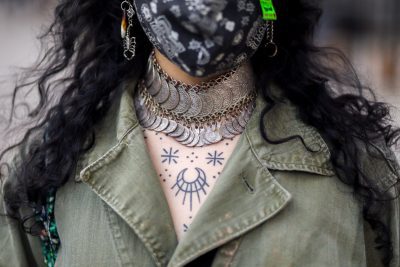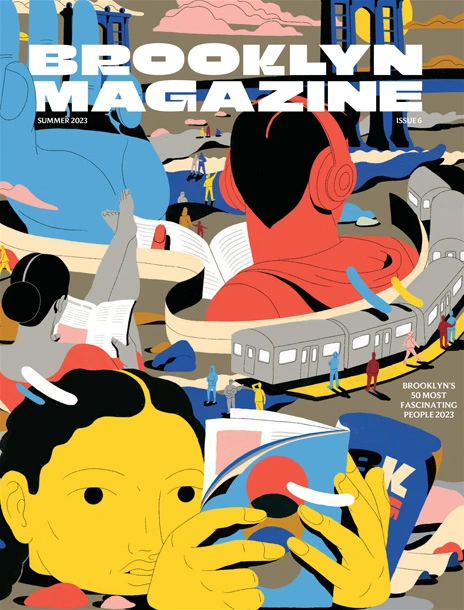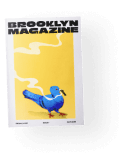Manual Labor: Daniel Dennett’s Haptic Whittles at Underdonk
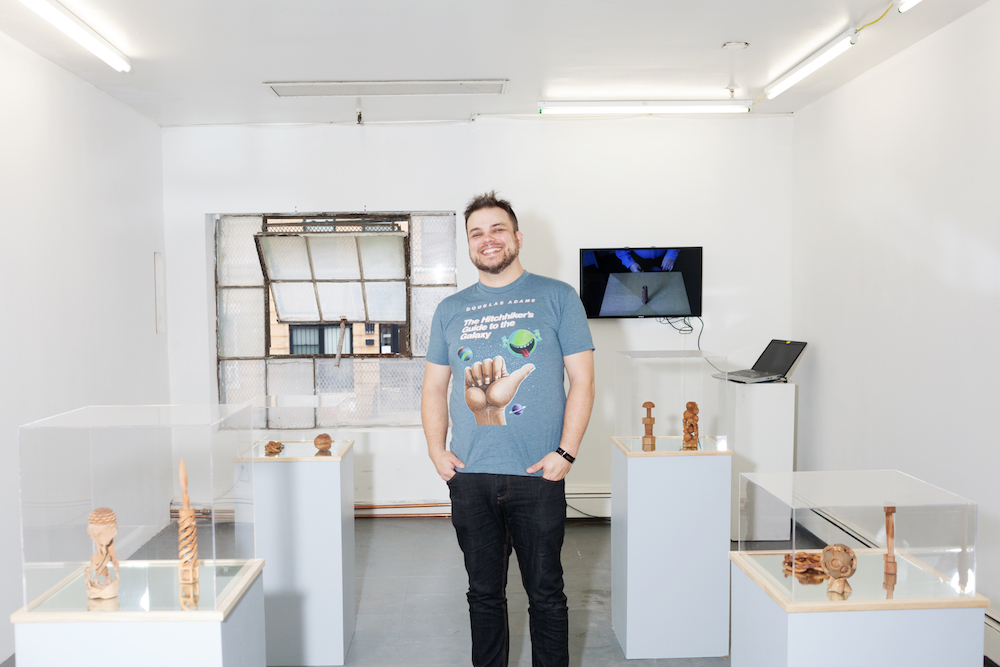
(Curator Nicholas Cueva with Daniel Dennett’s “Haptic Whittles” at Underdonk)
At first Daniel Dennett wasn’t sure showing his whittles at Underdonk was a good idea. Not because it’s a small gallery in Bushwick, but because it’s a gallery at all, and Daniel Dennett is a philosopher (specifically, a seventy-four-year-old professor of philosophy at Tufts), not a gallery-pandering, wallet-kissing art worlder.
According to this recent New Yorker profile, Dennett aimed to be an artist as a Harvard undergrad: a photo shows him shirtless, manipulating marble in Greece, and legend has it he asked his now-wife, Susan, to model for him because she had “nice shoulders.” (What an innocent line! I believe he meant it.) He gave up pursuing an art career, claiming he wasn’t “brilliant” enough. He seems humble—I’d replace brilliant with manipulative.
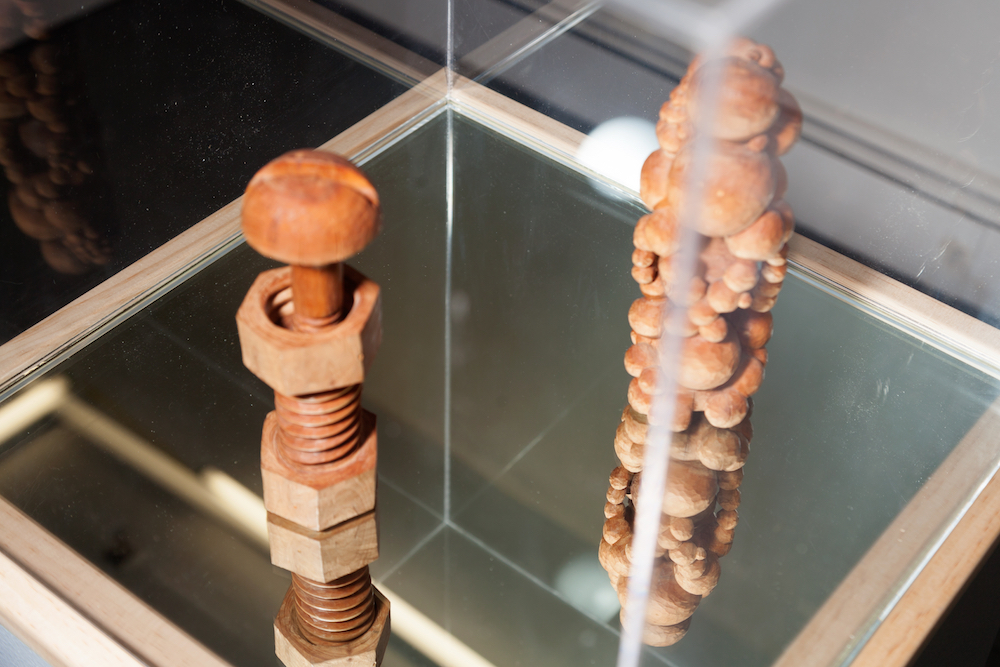

He agreed to do the show after a few more conversations with Nicholas Cueva, the curator, who had long been interested in Dennett’s philosophy, and deeply curious about his whittles; they’re the kind of thing you want to be near. Nothing is for sale—profit wasn’t a motivator on either side. Dennett was also pleased to learn that Underdonk is an artist-run outfit, and that the last show, curated by Dani Orchard, was titled Sister Outsider, after Audre Lorde’s collection of essays. (Dennett has drawn some criticism, partly thanks to his association with Christopher Hitchens and the other “four horsemen of New Atheism”, for his alleged anti-feminism. It seems he’s working to debunk this.)
The premise of the show is simple. There are no romantic waxings about technology or identity or any curatorial tricks at all: the fact is, these whittles are satisfying to be around. Time has made them golden and soft; they’ve been touched. They display a level of complicated manual-mental labor worth spending time with. “These works lack pretense,” Cueva wrote in his statement.
Cueva lacks pretense too—he’s a sweet, slightly unzipped artist. He’s the guy fixing the window, building the display columns, helping another artist tweak a telephone so it will play a recording, the guy spilling a bit of coffee on his fancy linen shirt just before the portrait is taken (it’s linen because he’s going uptown to the art fairs and so he put in effort to look the part). A Hitchhiker’s Guide to the Galaxy t-shirt, pulled from a pile in his studio, is a worthy stand-in. That is, Cueva is the perfect person to curate this show: he’s the reason a philosopher is showing whittles from the eighties in a gallery in Bushwick.


It’s not necessary to know anything about Dennett’s philosophies to enjoy the whittles, but it helps. Dennett is famous for a theory of consciousness (he’s a philosopher of the mind and a cognitive scientist) that has more in common with evolution than with magic. Our existence is built, and therefore our knowledge of that existence is built, with the adjustment of one neuron, one cell at a time. He is a physicalist; our consciousness can be explained through concrete, reality-based terms. The dualists, from the opposing camp, live in a more purely philosophical world, one where the discussion of the idea of soul and how that soul is specifically yours dominates. It’s less scientific; it’s somewhat magical (but isn’t there magic in small, slow change, too?).
Although they were conceived, in a way, as an escape or as a yin to the yang of his philosophical ideas (he made them for fun, for friends and family), Dennett’s whittles look like complex, physical representations of thought. An apple (made of apple wood) opens to reveal a fully intact core. All the moving parts are connected to the original whole; nothing is cut or glued. A bolt with perfectly spaced threads fits accurately with a nut. A chain with alternating circular and oval links is cleverly, sweetly delicate. They’re meant to be handled, but are shown at Underdonk under plexi boxes, on top of mirror-topped columns. Too many meddling hands is risky (instead, a video shows Dennett playing with each object). But the capture lends a special power: the chain feels like a coiled snake, the hidden secrets of the apple almost wily, as if at night it comes alive with all the rest.
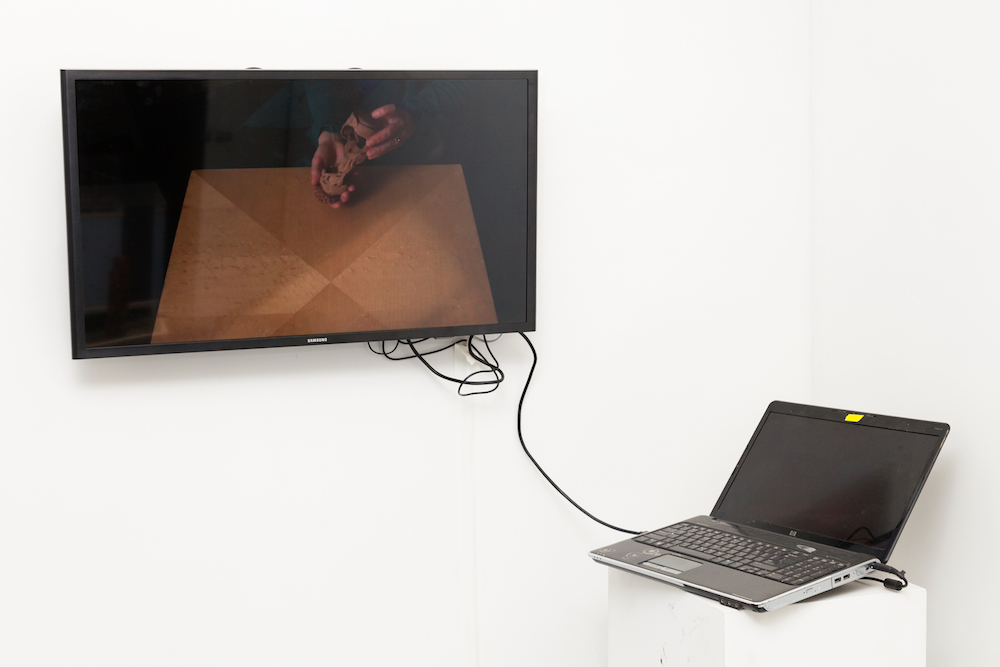

(Video: Daniel Dennett manipulating his whittles)
The best are conceptually simple but deviously confusing, like the chain or the apple or the bolt. Others—a towering twist with an interior, climbing wagon wheel—feel mythic in an almost alien way. Cueva says most are inspired by nature, which makes sense given the complicated, intimate way Dennett considers the natural world.
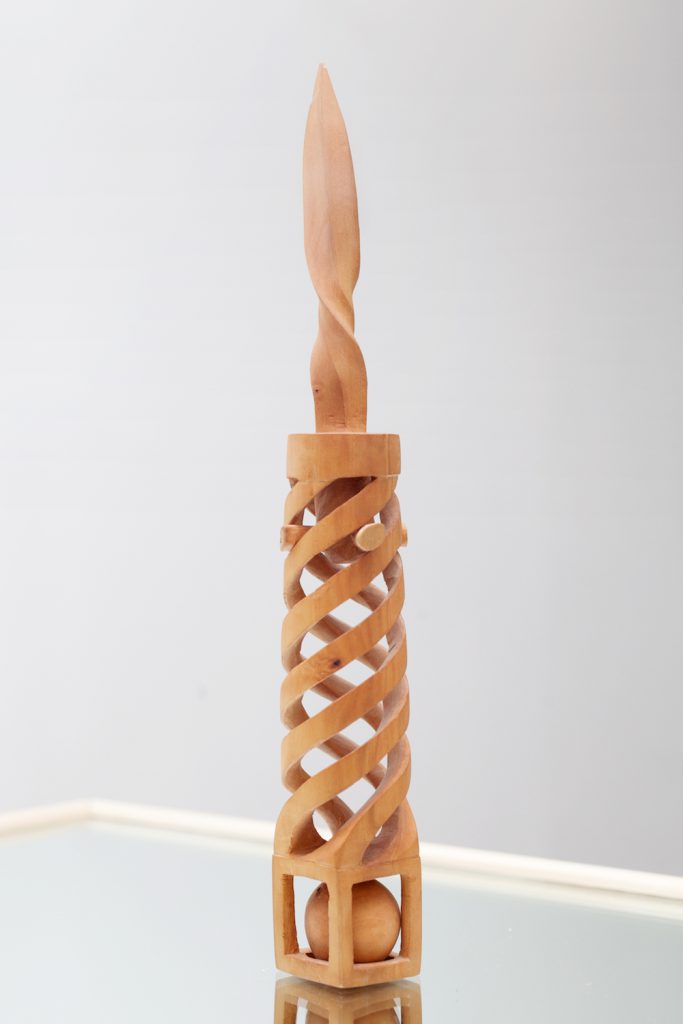

The mechanisms are also linked to a tradition of after-hours experimentation—technically, tinkering. Farmers and other physical problem-solvers spend time at night working through little hitches, mechanical problems. In the summers, Dennett is essentially a farmer: Joshua Rothman’s profile has him installing plumbing, fixing wiring, tending an orchard, building a Prohibition-era still, making calvados, sailing, fishing, pruning, and plowing, among other things.
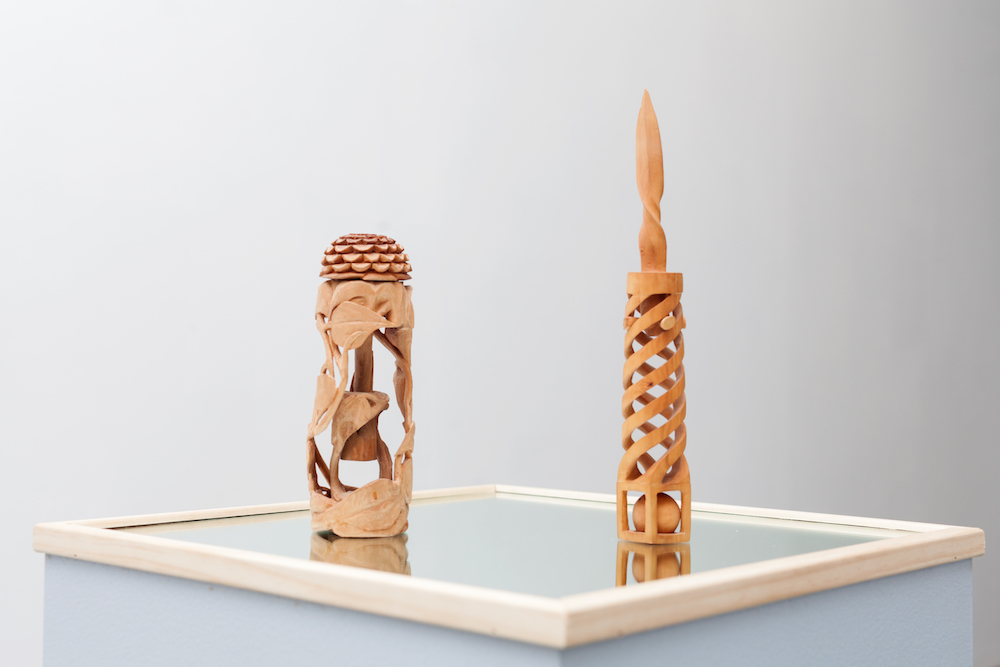

Dennett came from Massachusetts to attend the opening, and a few colleagues showed up, including Thomas Nagel, philosopher and professor at NYU. Dennett tweeted about the show, short because it’s Twitter, but casual: “My first exhibit in fifty years, some works in wood from the eighties and nineties.” Simple enough.
Haptic Whittles closes this Sunday, March 26th.
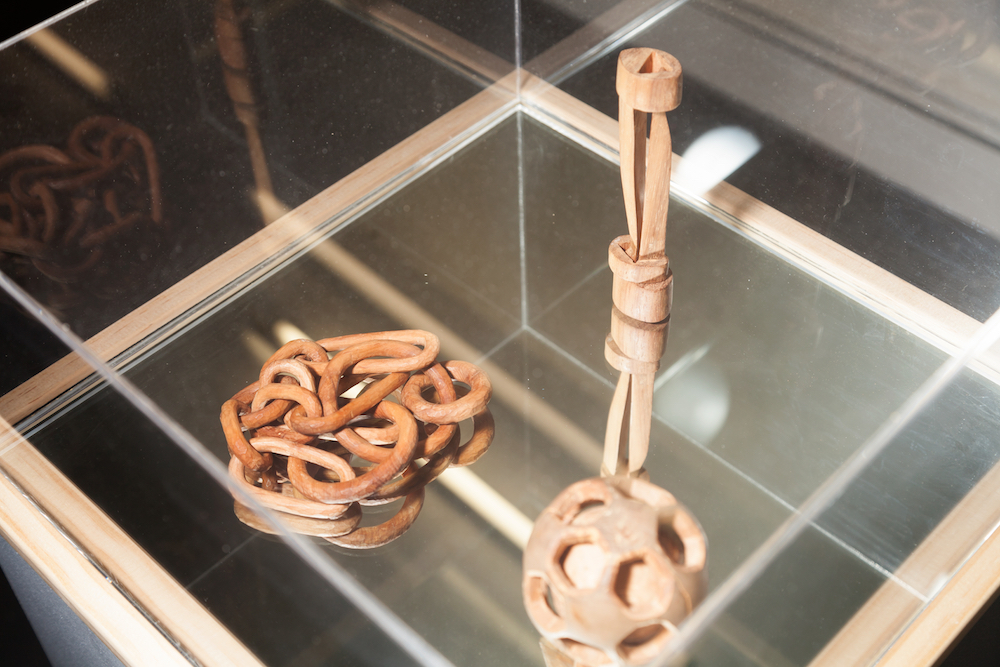

All photos: Maggie Shannon.
You might also like 















